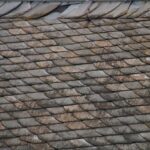
Whether it is priceless family photos, critical legal documents, or heartfelt letters, the vulnerability of paper in the face of water presents a special challenge. In this comprehensive guide, we will set out to unravel the art of drying water-damaged documents. From comprehending the types of water damage to investigating efficient drying techniques, our goal is to arm you with the knowledge and resources you need to preserve these priceless pieces of your history and identity.
Before delving into the specifics of document recovery, it is important to understand that the timely response to water damage is critical to the restoration process. Paper has varying degrees of resilience, so taking prompt, cautious action can mean the difference between saving memories and having to accept irreversible loss. Allow us to guide you through the delicate process of drying water-damaged documents, providing you with a road map for preserving the physical remains of your own and historical story.
See also our post on How to Prevent Water Damage to Furniture: A Comprehensive Guide
Types of Water Damage to Documents
Clean Water Damage
Occurs when documents are exposed to clean water, such as water from a pipe or tap. The paper may become damp, but contaminants are minimal.
Grey Water Damage
Involves exposure to slightly contaminated water, such as from a washing machine or dishwasher. Grey water damage may introduce some contaminants to documents.
Black Water Damage
The most severe type, resulting from exposure to highly contaminated water like sewage. Black water damage poses health risks and requires special handling.
Immediate Response to Water-Damaged Documents
Quick Retrieval
Retrieve water-damaged documents as quickly as possible. The longer they remain submerged, the higher the risk of irreversible damage.
Handle with Care
Handle wet documents with extreme care. Wet paper is fragile, and rough handling can lead to tearing or further damage.
Sorting and Categorization
Sort documents based on their type and importance. Categorize them to prioritize the drying process for the most critical items.
Blotting with Absorbent Material
Gently blot excess water using absorbent materials like clean towels or unprinted paper. Avoid rubbing, as it can cause ink to smear.
Air Drying in a Cool, Dry Area
Place documents in a cool, dry area with good ventilation for initial air drying. Avoid exposure to direct sunlight, which can cause fading.
Drying Techniques for Water-Damaged Documents
Air Drying
Lay documents flat on a clean, dry surface. Use fans to circulate air and hasten the drying process. Rotate documents regularly to ensure even drying.
Interleaving with Absorbent Paper
Place absorbent paper between pages of documents to aid drying and prevent sticking. Change interleaving sheets regularly until documents are fully dry.
Dehumidification
Use dehumidifiers to remove excess moisture from the air. This accelerates the drying process and reduces the risk of mold growth.
Freezing for Preservation
If drying is not immediately possible, consider freezing wet documents. Freezing halts further damage and provides time for proper drying at a later date.
Professional Document Restoration
For valuable or irreplaceable documents, consult professional document restoration services. They possess specialized equipment and expertise for optimal restoration.
See also our post on 15 Important Water Damage Restoration Tips
Dealing with Ink and Color Run
Blotting, Not Rubbing
If ink is present, blot gently with absorbent material. Avoid rubbing, as it can spread ink and cause further damage.
Isopropyl Alcohol
For non-water-soluble ink, consider lightly applying isopropyl alcohol using a cotton swab. Test in an inconspicuous area first and proceed cautiously.
Commercial Ink Erasers
Explore commercial ink erasers designed for document restoration. These erasers can effectively lift ink stains without causing harm to the paper.
Colorfastness Test
Before using any cleaning agent, perform a colorfastness test on a small, inconspicuous area. This ensures the treatment won’t cause color bleeding.
Prevention of Mold Growth
Quick Drying
Mold thrives in damp conditions, so prompt drying is essential. Mold growth can begin within 24 to 48 hours, emphasizing the need for quick action.
Proper Ventilation
Ensure proper ventilation during the drying process. Good airflow discourages mold growth and contributes to the overall effectiveness of drying.
Humidity Control
Use dehumidifiers to control humidity levels in the drying area. Maintaining lower humidity inhibits mold and mildew.
Distancing from Moisture Sources
Keep drying documents away from potential moisture sources. Avoid placing them directly on damp surfaces or in areas prone to water exposure.
Anti-Mold Solutions
Consider applying anti-mold solutions designed for paper. These solutions create a protective barrier against mold and help prevent future growth.
Restoration of Damaged Document Structure
Flattening Warped Documents
To flatten warped documents, place them between absorbent sheets and gently press under a weighted, flat surface. Rotate regularly until fully flattened.
Repairs with Rice Paper
For torn or delicate documents, consider repairs using thin rice paper and wheat starch paste. This technique is often employed in professional document restoration.
Preservation Encapsulation
Explore preservation encapsulation for particularly fragile documents. This process involves encapsulating documents in clear, inert plastic for long-term protection.
Reinforcement with Archival Tape
If repairs are necessary, use archival tape designed for document preservation. Ordinary tape can cause further damage due to acidity and adhesives.
Storage in Archival Materials
Once restored, store documents in archival-quality materials. Acid-free folders, sleeves, and boxes provide a protective environment for long-term preservation.
See also our post on Healthcare Facility Cleaning: Meeting Strict Hygiene Standards
Long-Term Document Preservation
Controlled Storage Conditions
Store documents in a controlled environment with stable temperature and humidity. Avoid attics, basements, or areas prone to temperature fluctuations.
Regular Inspection
Periodically inspect stored documents for signs of damage. Early detection allows for prompt intervention and ensures the continued preservation of your collection.
Digitization for Backup
Consider digitizing important documents for backup. Digital copies provide an additional layer of protection against potential physical damage.
Handling with Clean Hands
Handle documents with clean hands to avoid introducing oils, dirt, or contaminants. Use cotton gloves for particularly delicate or valuable items.
Professional Conservation Advice
For rare or significant documents, seek professional conservation advice. Conservation experts can offer guidance on specialized preservation techniques.
Conclusion
This guide is your companion, offering a roadmap to navigate the delicate process of drying water-damaged documents, transforming what might seem lost into a testament of resilience and preservation. The journey of drying water-damaged documents is a laborious process that calls for a combination of patience, care, and the right techniques. From the immediate response to preventing mold growth, restoring document structure, and ensuring long-term preservation, each step contributes to the successful recovery of these priceless pieces of our personal and historical legacy.






